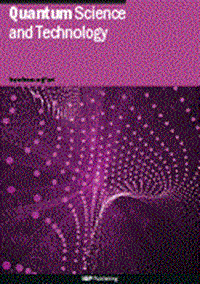Ensemble-based quantum token protocol benchmarked on IBM quantum processors
IF 5
2区 物理与天体物理
Q1 PHYSICS, MULTIDISCIPLINARY
引用次数: 0
Abstract
Quantum tokens envision to store unclonable quantum states in a physical device, with the goal of being used for personal authentication protocols, as required by banks. Still, the experimental realization of such devices faces many technical challenges, which can be partially mitigated using ensembles instead of single qubits. In this work, we thus propose an ensemble-based quantum token protocol, describing it through a simple yet general model based on a quantum mechanical observable. The protocol is benchmarked on five IBM quantum processors and a general hacker attack scenario is analyzed, in which the attacker attempts to read the bank token and forge a fake one, based on the information gained from this measurement. We experimentally demonstrate that the probability that the bank erroneously accepts a forged coin composed of multiple tokens can reach values below 10−22, while the probability that the bank accepts its own coin is above 0.999. The overall security of the protocol is therefore demonstrated within a hardware-agnostic framework, confirming the practical viability of the protocol in arbitrary quantum systems and thus paving the way for future applications with different ensembles of qubits, such as color center defects in solids.基于集成的量子令牌协议在IBM量子处理器上进行基准测试
量子令牌设想在物理设备中存储不可克隆的量子状态,目标是按照银行的要求用于个人身份验证协议。尽管如此,这种设备的实验实现面临许多技术挑战,可以部分缓解使用集成而不是单个量子比特。因此,在这项工作中,我们提出了一个基于集成的量子令牌协议,通过一个基于量子力学可观察到的简单而通用的模型来描述它。该协议在五台IBM量子处理器上进行基准测试,并分析了一般的黑客攻击场景,其中攻击者试图读取银行令牌并根据从该测量中获得的信息伪造假令牌。我们通过实验证明,银行错误接受由多个令牌组成的伪造硬币的概率可以达到10−22以下的值,而银行接受自己的硬币的概率在0.999以上。因此,该协议的整体安全性在一个与硬件无关的框架内得到了证明,证实了该协议在任意量子系统中的实际可行性,从而为未来不同量子比特组合的应用铺平了道路,例如固体中的色心缺陷。
本文章由计算机程序翻译,如有差异,请以英文原文为准。
求助全文
约1分钟内获得全文
求助全文
来源期刊

Quantum Science and Technology
Materials Science-Materials Science (miscellaneous)
CiteScore
11.20
自引率
3.00%
发文量
133
期刊介绍:
Driven by advances in technology and experimental capability, the last decade has seen the emergence of quantum technology: a new praxis for controlling the quantum world. It is now possible to engineer complex, multi-component systems that merge the once distinct fields of quantum optics and condensed matter physics.
Quantum Science and Technology is a new multidisciplinary, electronic-only journal, devoted to publishing research of the highest quality and impact covering theoretical and experimental advances in the fundamental science and application of all quantum-enabled technologies.
 求助内容:
求助内容: 应助结果提醒方式:
应助结果提醒方式:


